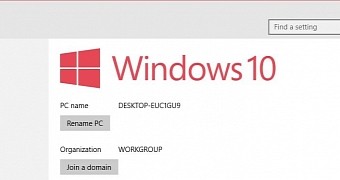Microsoft has recently made Windows 10 a recommended update for Windows 7 and 8.1 PCs, which means that the upgrade is selected by default on these computers when trying to install new patches via Windows Update.
As a result, Windows 10 was expected to experience an important boost in adoption figures, mostly because more users would thus get access to the new operating system, while others could install it by mistake, simply because it was offered as a recommended update.
But according to preliminary data collected by CW, making Windows 10 a recommended download in Windows Update has generated only a small bump in adoption figures. Furthermore, the adoption rate that Windows 10 experienced in late 2015 during the holiday season was even bigger, these stats show.
A staggered release
There are several reasons this might be happening, and these include the staggered approach that Microsoft has embraced for making Windows 10 a recommended update, which means that only a few PCs are actually seeing this change. More could get it in the coming weeks and months, so an increase in Windows 10 adoption rate could be experienced in the near future.
At the same time, Microsoft continues to offer users who upgrade to Windows 10 the possibility of downgrading to their previous Windows version, be it 7 or 8.1, during the 30 days after the install, so it’s believed that some these actually took advantage of this offer and returned.
Windows 10 will continue to be available as a free upgrade for Windows 7 and 8.1 users until July 29, but it’s not yet clear what’s going to happen after this deadline is reached. Microsoft could extend the free upgrade offer for another period of time or terminate it forever, but this is highly unlikely especially if the company is far from reaching its goal of bringing Windows 10 on 1 billion devices by 2017.

 14 DAY TRIAL //
14 DAY TRIAL //